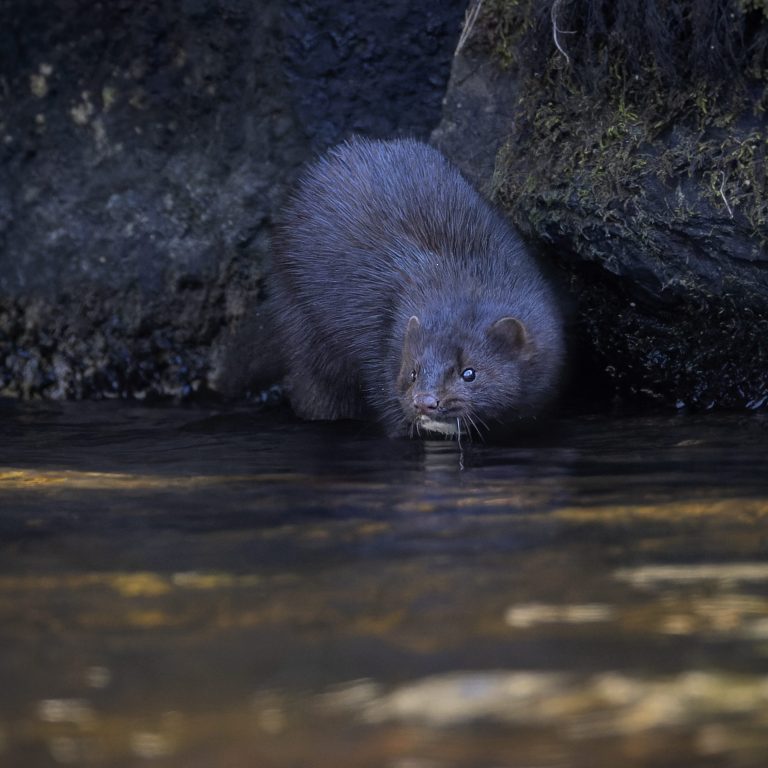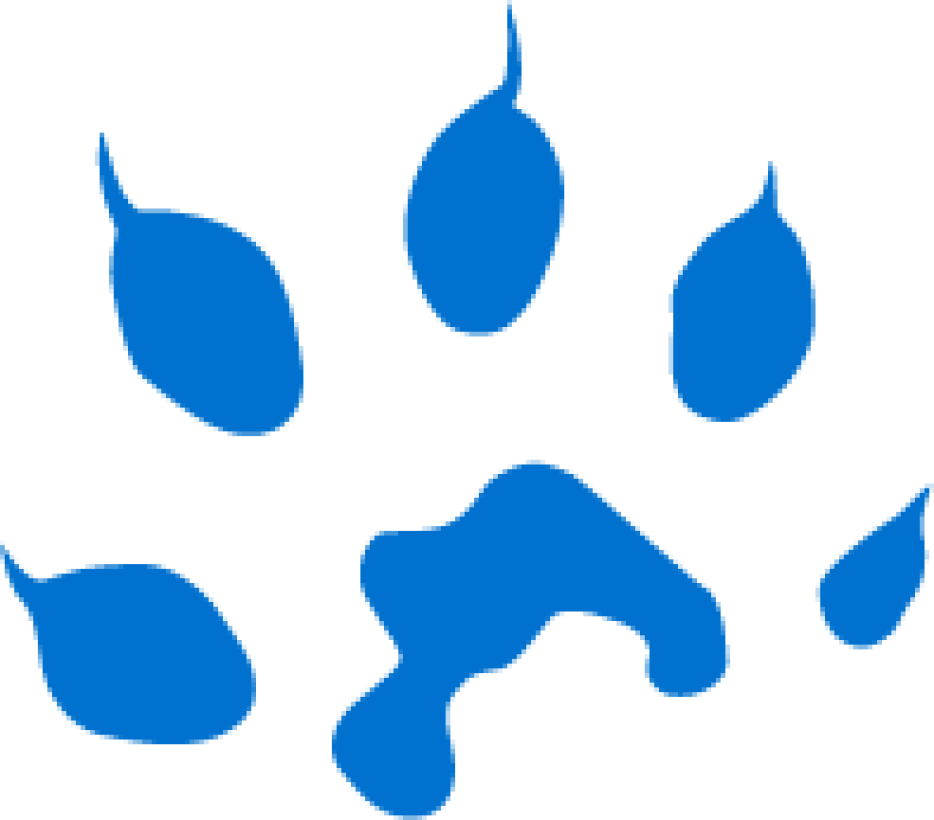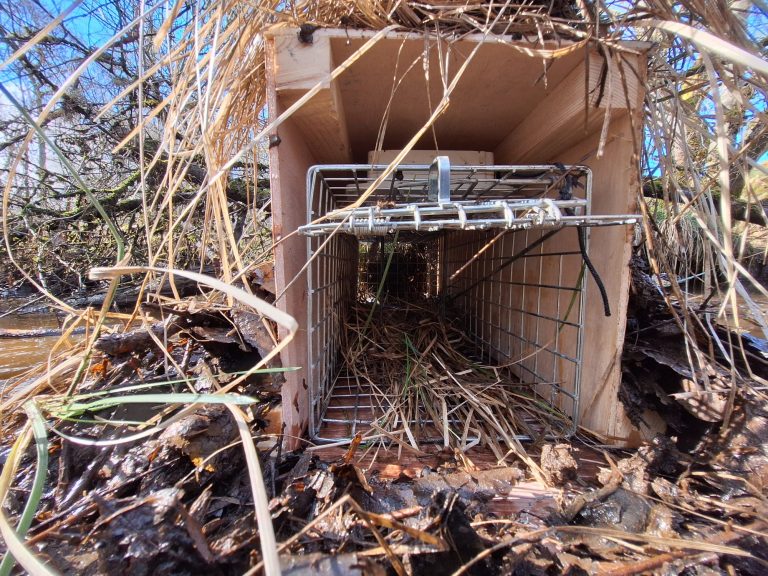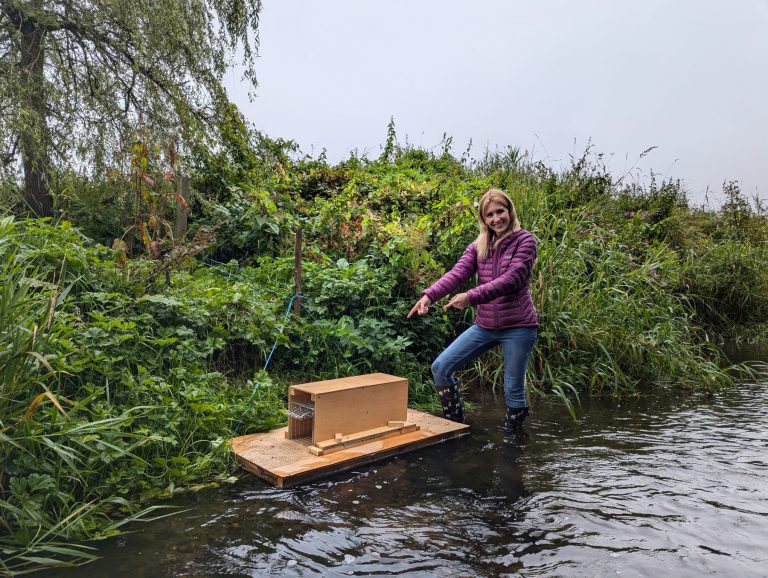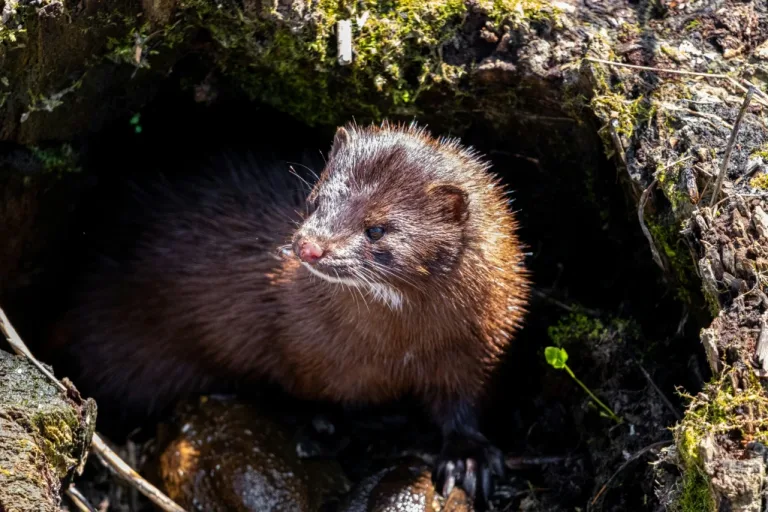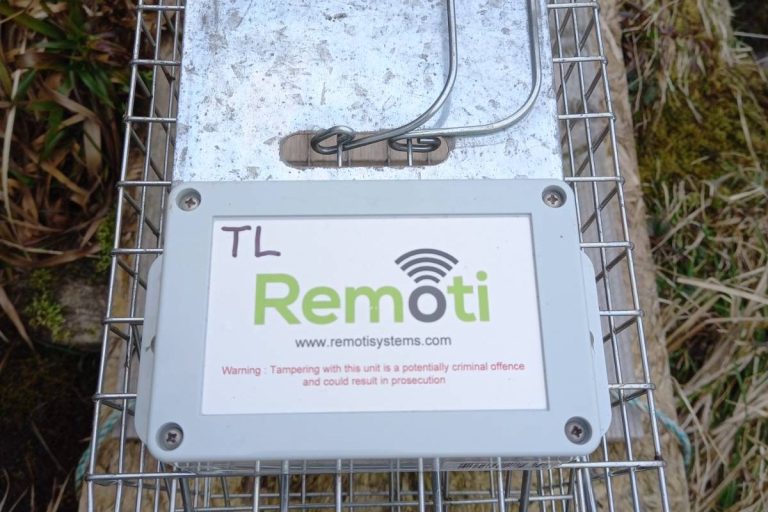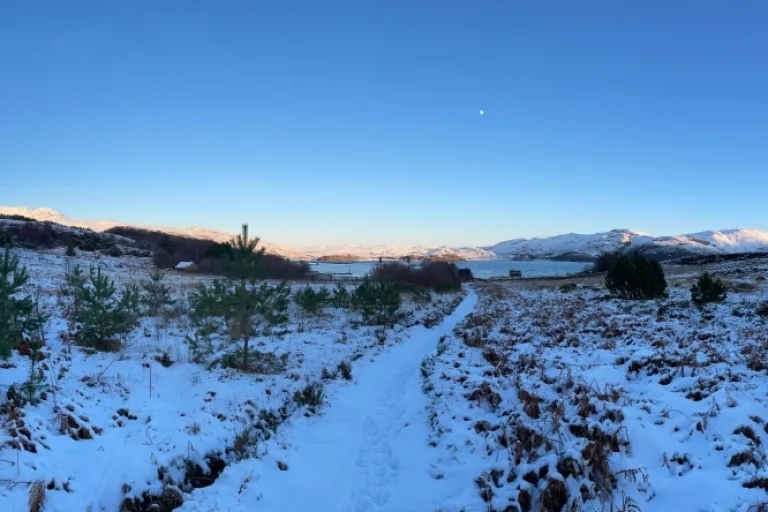About American mink
The American mink (Neogale vision or Neovison vison) is a well-known invasive non-native species in Scotland and across the Britain. It spread throughout the country following escapes from fur farms in the latter half of the 20th century.
Being an opportunistic predator, often killing more than they require for food, mink have had a devastating effect on our native wildlife. In particular, ground nesting birds and water vole populations are vulnerable to predation by this avid hunter.
The mink is a semi-aquatic mammal with rich, usually dark brown fur, and a white chin patch. They belong to the “Mustelid” family and occupy both freshwater and saltwater habitats, following waterways, lake edges and coasts.
To find out more about identifying mink, their introduction in Britain and their impacts, visit our American mink page.
